The M2 pre-series
The future M2 design was related to the T5 prototype, designed at the famous Rock Island Arsenal, the federal government's main weapons manufacturer and U.S. army foundry. Work started in 1938, as a new model based on the M2 light tank. By June 1939, the prototype of the M2 Medium Tank was ready for trials, with a sloped hull wrapping a tall fighting compartment and a new 350 hp R-975 aviation radial engine. This M2 was limited to 18 deliveries, for evaluation by an US Army commission. The M2 borrowed many parts from the light M2, starting with the vertical volute springs suspension, three of them being fitted to support the longer hull.The tracks were rubberized, as tests demonstrated that rubber-shoed tracks had better durability than metal ones. The aviation engine was far more powerful than the M2 light tank's one, notably to cope with the extra weight of a longer hull. It was chosen for being compact, efficient, sharing parts with a largely produced and reliable model, and also facilitating the maintenance procedures. The drawback, never experienced by the M2 in the field, was with its high octane aviation gasoline consumption, a highly volatile, flammable fuel.
M2 hull design
The M2 hull was a compromise between the vintage Liberty tank (Mark VII), co-developed with Britain, and the need for an anti-tank gun armed, fully traversing turret, inspired by the M2 light tank. The tall hull was litteraly bristling with firepower, with no less than seven M1919 Browning standard cal.30 (7.62 mm) machine guns, and nine in maximal configuration. Two were fixed in the frontal sloped glacis, and another coaxial in the turret, with four more in sponsons in the superstructure, in ballmounts on each corner of the central fighting compartment.Two mounts were added early on (later removed from the M2A1) to both sides of the sloped turret, for anti-aircraft defense, bringing the total to a level never attained by any tank before and after. To feed this impressive arsenal, no less than 12,250 cartridges were stored inside the lower storage boxes of the central casemate. But the main armament was the M3 37 mm (1.46 in) anti-tank high velocity gun, also borrowed, as the turret, from the light M2. It was fed with AP and HE rounds, which could pierce, at 500 yards (457 m), over 47 mm (1.85 in) of sloped armor.
The armor was riveted, outside and inside (which presented spalling risks in case of a blast) with sloped surfaces around the central casemate. The frontal glacis was the true innovation of the time, artificially increasing the effective armor thickness by an inch or more. The driver sat directly on top of the tank's transmission, and was granted an excellent peripherical vision through three large armored folding panels. The glacis machine-gun muzzles were only protruding a few centimeters, the entire length of the barrels being kept inside the hull. Both were fired by the driver. Another odd feature, bullet deflector plates were installed on the rear fenders, a trench-warfare specificity wich soon proved useless.
Other bullet deflectors were installed on the front mud guards and the sloped glacis. The armor was just 6.4 mm (0.25 in) on the bottom, internal compartment firewall, turret roof, and 20 mm (0.79 in) on the sides, 30 mm (1.18 in) on the frontal glacis, turret sides and gun mantlet. With its slope, the frontal armor was equivalent to 50 mm (1.97 in) in direct fire. The engine was fed by two internal tanks, with a total of 473 liters (126 US gallons).
Production of the upgraded M2A1
In August 1940, the US Government contracted the newly-built Detroit Arsenal Tank Plant, owned by Chrysler, to provide 1000 units. However, with the war in Europe showing that the M2 design was already obsolete, the order was shifted to the M3 Lee, and production was resumed at the Rock Island Arsenal, where 94 M2A1s were ultimately produced. This was the modified version chosen by the army, with thicker armor (the gun mantlet was now 51 mm/2 in strong), larger turret, borrowed from the M3 Stuart.The engine was also upgraded to the Wright radial R-975 C1, being supercharged to produce another 50 hp, for a total of 400 (300 kW). The new larger turret also allowed extra pintle mounts to be fitted. However, lacking armor, having a high profile, and armed with a relatively small main gun and a collection of machine-guns in an obsolete configuration, the M2 compared poorly to other European tanks. But some features, like the chassis, engine, transmission and suspension, and more importantly, the frontal glacis design, had some strong influences on later designs, starting with the M3 Lee and the M4 Sherman.
Active service
Because of its limitations, the M2 medium tank never left American soil, being registered by the ordnance as training machines. They served with the 67th Infantry Regiment training unit, and later with the 69th Armored Regiment of the First Armored Division in 1941. Most officers and crews fighting in North Africa in 1943, with light M3 Stuarts and medium M3s, had been trained on these machines. By 1945, these machines were nearly all scrapped, but a handful survived, now displayed at the Aberdeen Proving Grounds, Patton Museum of Cavalry and Armor, and the US Army Ordnance Museum.| M2A1 Medium Tank specifications | |
| Dimensions | 17ft7in x 8ft6in x 9ft3in (5.38 x 2.59 x 2.82 m) |
| Total weight, battle ready | 18.7 tons (41,000 lbs) |
| Crew | 6 (commander, driver, 4 gunners) |
| Propulsion | Wright R975 EC2 air-cooled radial gasoline
400/320 bhp |
| Speed | 26 mph (42 km/h) |
| Range | 210 km at medium speed (130 mi) |
| Armament | Main : 37 mm (1.46 in) M3 - 200 rounds
Secondary: 7 to 9 cal.30 (7.62 mm) M1919 machine-guns -12,250 rounds |
| Armor | From 6.4 to 51 mm (0.25-2 in) |
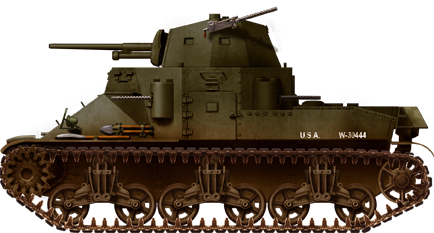
Early production M2 medium tank. Notice the two extra turret mounts. The total was a staggering 9 Browning M1919 cal.30 (7.62 mm) machine guns. However, there were only four gunners manning the entire arsenal, including two for the main M3 37 mm (1.46 in) gun. The M3 light tank, of the same era, was also heavily armed with machine guns. But these features quickly lost favor.
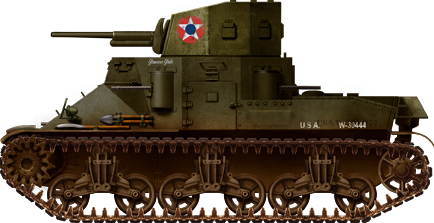
M2A1, the main production series, made at Rock Island Arsenal. This is the "Glamorous Gladis", from a training unit in early 1941, now preserved at the Aberdeen Proving Grounds. The main differences with the preseries M2 was the M2 light tank turret, some improvements of the gun mantlet and glacis armor, and an upgraded Wright radial R-975 C1 supercharged engine. The M2A1 formed thousands of tankers during the early stages of World War II.
Gallery
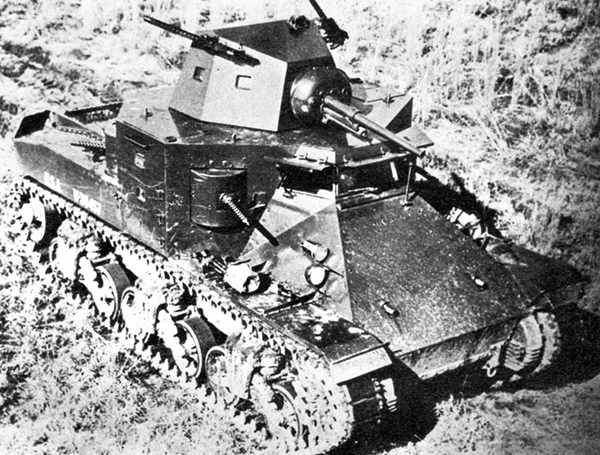
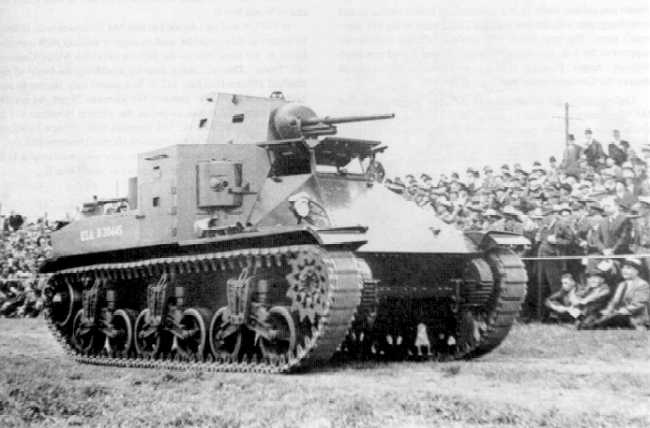
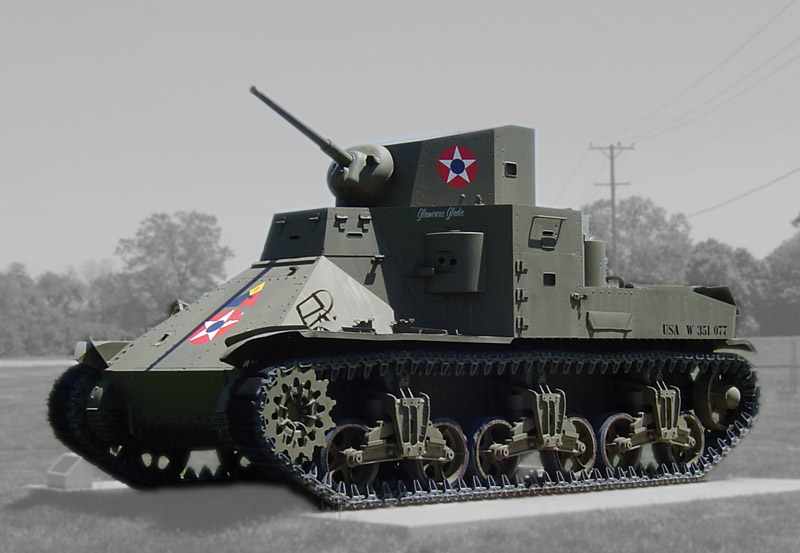

WW2 Tanks




























WW2 tanks posters

All Tiger tanks liveries.

Panther liveries and variants

WW2 Armour - All tanks











Tanks aces and single tanks series

Find more there

Museums, Movies, Books & Games
The Tanks and Armor in pop culture
Tanks and armored vehicles in general are only really grasped when seen first person: The mass, the scale, it's all there. Explore also the way tanks were covered in the movie industry, in books and in video games.Movies:
Best tanks movie on warhistoryonline.com
On imdb.com
On bestsimilar.com/
miltours.com
liveabout.com/
watchmojo.com
Video Games:
pcgamesn.com
historyhit.com
levvvel.com
vg247.com/best-tank-games
mmobomb.com/
alienwarearena.com

